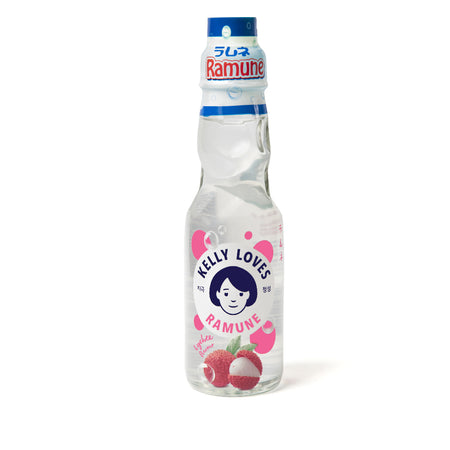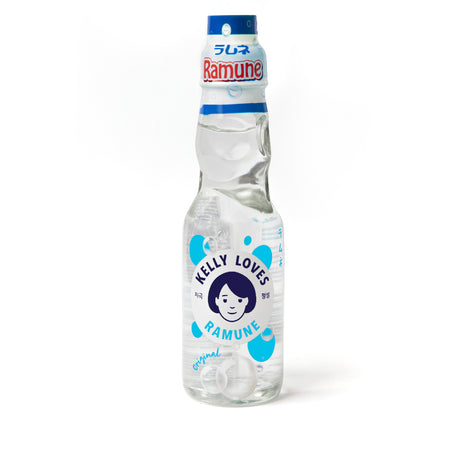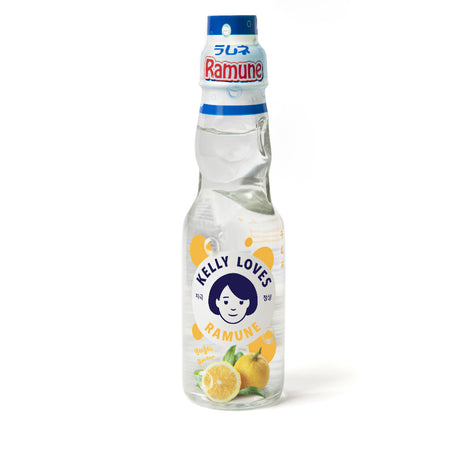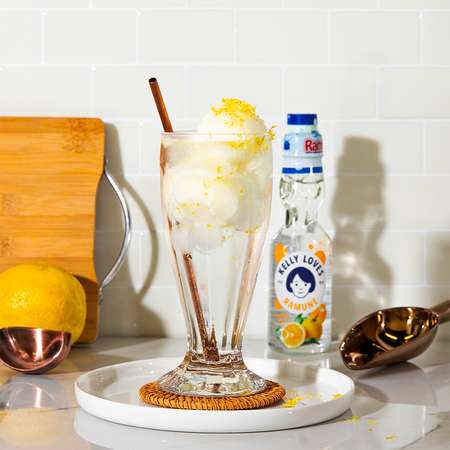Why does ramune have a marble inside it?
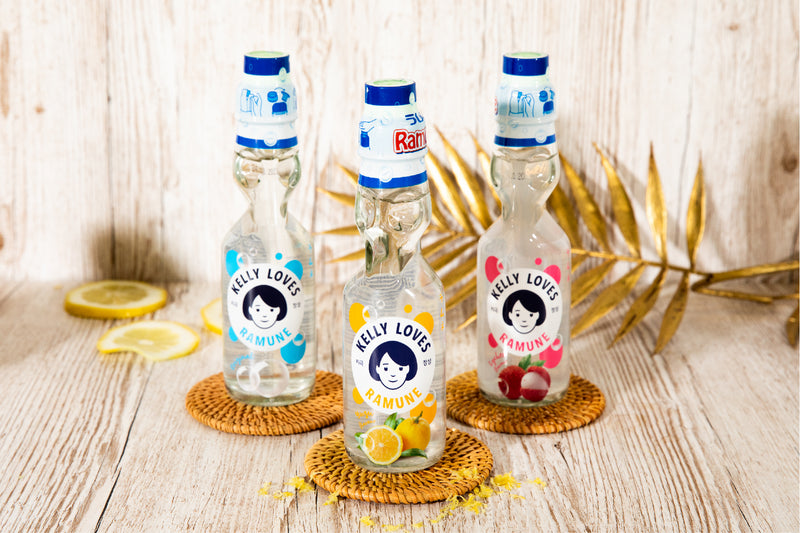
The marble, along with the special plastic cap, opens the bottle. You push down on the marble in the neck of the bottle using a plunger until the marble drops with a ‘pop’. Popping the ramune marble is considered to be a must-do experience by many tourists when visiting Japan. But you can also enjoy drinking ramune in the UK. So let’s find out more about this iconic marble.
Why is there a marble ball inside ramune?
In 1872, Hiram Codd (an English engineer and inventor) discovered that placing a glass marble in the neck of a glass bottle could create a durable seal for soda bottles, without the need for a stopper or cork. He used the bubbly pressure of the soda to push the marble against the upper neck of the bottle. To open the bottle, Codd invented a plunger that inserted into the bottle’s neck (in modern bottles, the plunger is usually attached to the top of the cap). This invention worked to great effect: some of the marbled bottles have kept their seal for over 100 years!
To stop the marble rolling back to the top and stopping the bottle again while you’re drinking, the neck is designed to keep the marble in its place when the bottle is tilted, allowing the drinker to take a sip. To re-seal the bottle, you just shake the bottle and tip it upside down.
There are also several grooves on the outside of the bottle. These grooves are located where you should place your fingers and they also help to keep the marble away from the cap when drinking. Ramune soda is said to have been introduced by Scottish pharmacist Alexander Cameron Sim in 1884 in the Japanese city of Kobe. It was sold in Codd-neck bottles to prevent it from going flat. Some of the interesting history of ramune!
What does the marble do in ramune?
The marble inside the ramune bottle was originally used as a seal to preserve the fizz. When drinking ramune for the first time, you might find it tricky to drink, as once the marble has dropped down into the soda, you have to stop the marble from blocking the flow as you tip the bottle back to sip. There are some indents on the bottle to help to hold the marble back. There’s a knack to drinking it while tipping the marble into the indent.
Today, marbles are rarely used to seal carbonated drinks because modern bottle caps serve to keep the bubbles bubbly. The marbles are kept in ramune bottles as a novelty and a tradition. It’s the marble which makes ramune stand out from other sodas on the market and it has become part of the ramune identity.
What is the marble in Japanese marble soda made of?
The marble is usually made of glass, just like the marbles children play with. Glass is the best material as it’s able to withstand the instant change in pressure when the plunger is pressed down and the soda fizzes. Another benefit is that glass isn’t permeable over time. And glass is flavourless, so it won’t affect the taste of the soda.
Last but not least — the glass provides that iconic clinking sound as the marble rolls in the bottle while you drink. In Japan, the sound of the glass marble clinking is synonymous with warm summer evenings spent at festivals and firework displays; many think back to their childhoods when they hear the clinking.
How do you get the marble out of ramune?
Understandably, many children want to take the marble out of the ramune bottle to play with it or collect it as treasure! Just the fact that it’s seemingly inaccessible makes it both desirable and a tempting challenge — and they do make pretty awesome keepsakes.
But accessing the marble is deliberately tricky; the marble is designed to be larger than the top of the bottle to avoid becoming a choking hazard. Smashing the bottle is obviously a big ‘no!’. It would be hazardous, producing shards of glass. Instead, remove the cap carefully to create space to allow the marble to roll out. Whether the cap is made from plastic or aluminium, you can take these steps to remove the cap gently:
- Firstly, wash out the bottle to remove any sticky, sugary residue.
- Next, use a hacksaw to cut small incisions into the plastic cap on the outside of the cap and around the top. This loosens the seal.
- Then stick a flat-head screwdriver into one of the cuts to provide the leverage to lift the cap off. This might take some wiggling, but it should come off quite quickly.
The invention of the marble seal bottle might not be Japanese, but Japan has a special way of respecting the past. In using the old-fashioned Codd-neck ramune bottle, a tradition is saved and happy memories are kept alive.
Ramune is a fun, delicious and refreshing drink, associated with good times. It’s also used to provide an energy boost when you’re feeling tired and fragile. Ramune has become an integral part of Japanese culture and the humble ramune marble is a big part of it. If you haven’t experienced ramune yet, give it a pop!
